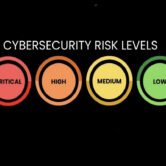
How can IT training support compliance and regulatory requirements?
Awareness and Understanding of Legal Obligations
- Educates employees on laws such as GDPR, HIPAA, or PCI DSS.
- Explains data protection policies relevant to each department.
- Clarifies consequences of non-compliance for both the company and individuals.
- Keeps staff updated on evolving legal and industry standards.
- Uses case studies or scenarios to build practical understanding.
Data Handling and Privacy Training
- Instructs employees on secure data collection, storage, and sharing practices.
- Reinforces anonymization, consent protocols, and access control procedures.
- Promotes safe handling of customer data across systems and devices.
- Encourages documentation of consent, data use, and user rights.
- Supports the principle of least privilege in data access.
Security Protocol Implementation
- Trains staff in secure authentication, password policies, and MFA.
- Demonstrates how to report security breaches or suspicious activity.
- Guides users through encryption, secure backups, and remote access protocols.
- Reinforces device security and usage of approved applications.
- Tests compliance through regular security drills or assessments.
Audit Trail and Documentation Support
- Helps teams maintain required logs, records, and data histories.
- Supports proper labeling and classification of sensitive information.
- Ensures employees understand their documentation responsibilities.
- Provides templates and workflows aligned with audit processes.
- Instructs on proper record retention and deletion policies.
Mitigating Human Risk Factors
- Reduces chances of violations due to lack of awareness or negligence.
- Empowers users to proactively report or escalate risks.
- Builds confidence in managing regulated tasks independently.
- Ensures departments follow compliance-specific tool usage.
- Strengthens startup credibility in regulated industries and investor discussions.





